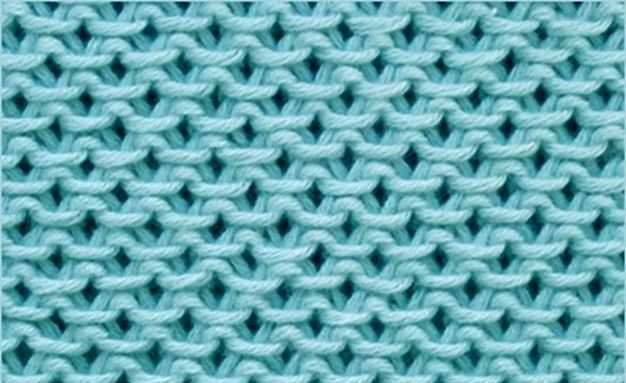
The Chinese wave stitch knitting pattern is a beautiful and intricate design that adds a touch of elegance to any project. This pattern has a unique wave-like texture that resembles the ripples of water, creating a visually stunning effect. It’s a popular choice among knitters who want to create garments, accessories, or home decor items with a sophisticated look.
The Chinese wave stitch is worked over multiple rows and requires a bit of concentration, but the effort is well worth it. It’s versatile and can be used in a variety of projects, including scarves, shawls, sweaters, and blankets. Whether you’re a beginner or an experienced knitter, this pattern is sure to impress.
To create the Chinese wave stitch, you’ll need to know how to knit and purl stitches, as well as basic increases and decreases. The pattern is typically worked over an odd number of stitches, and the repeat consists of a combination of knits, purls, and yarn overs. Once you get the hang of the pattern, you’ll be able to create stunning pieces that showcase your knitting skills.
Chinese Wave Stitch Knitting Pattern
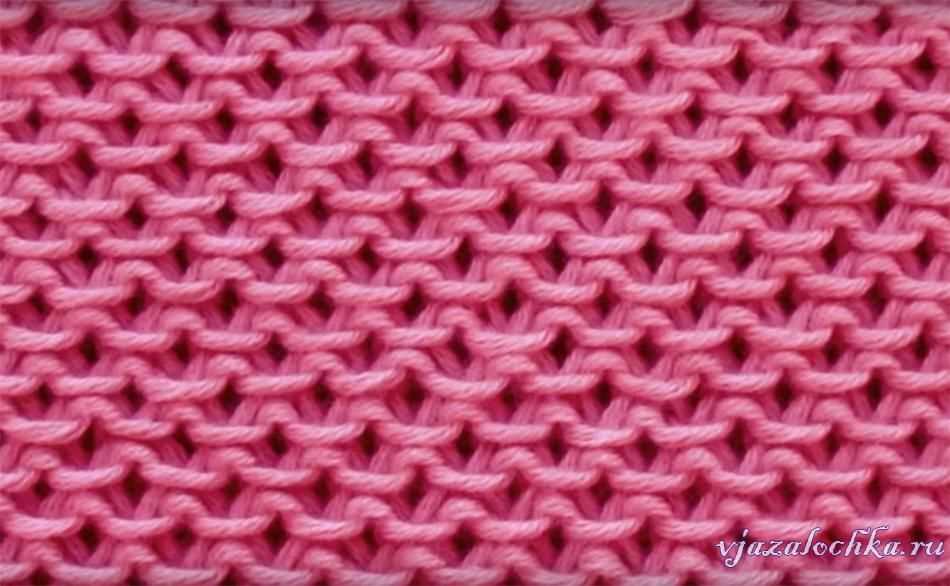
If you are looking for a unique and intricate knitting pattern, the Chinese wave stitch is a great option. This pattern features an elegant wave-like design that adds a touch of sophistication to any project. Whether you are knitting a sweater, scarf, or blanket, the Chinese wave stitch will elevate your piece to a whole new level.
The Chinese wave stitch pattern is formed by alternating knit and purl stitches in a specific sequence. To create the wave-like effect, the pattern utilizes decreases and increases at strategic points. The result is a mesmerizing design that resembles rolling waves.
To knit the Chinese wave stitch pattern, you will need to have an intermediate level of knitting skills. The pattern requires attention to detail and precision, but the end result is well worth the effort. With practice, you will be able to master this intricate stitch and create stunning pieces that are sure to impress.
Here is a step-by-step guide to knitting the Chinese wave stitch pattern:
- Cast on an even number of stitches.
- Row 1: Knit all stitches.
- Row 2: Purl all stitches.
- Row 3: Knit 2 stitches together, *yarn over, knit 3 stitches together, yarn over, knit 1* repeat from * to * across the row.
- Row 4: Purl all stitches.
- Repeat rows 1-4 until desired length is reached.
- Bind off all stitches.
Remember to always read the pattern thoroughly and make sure to check your gauge before starting the project. Adjust your needle size if necessary to achieve the desired tension. Happy knitting!
What is Chinese Wave Stitch Knitting Pattern?
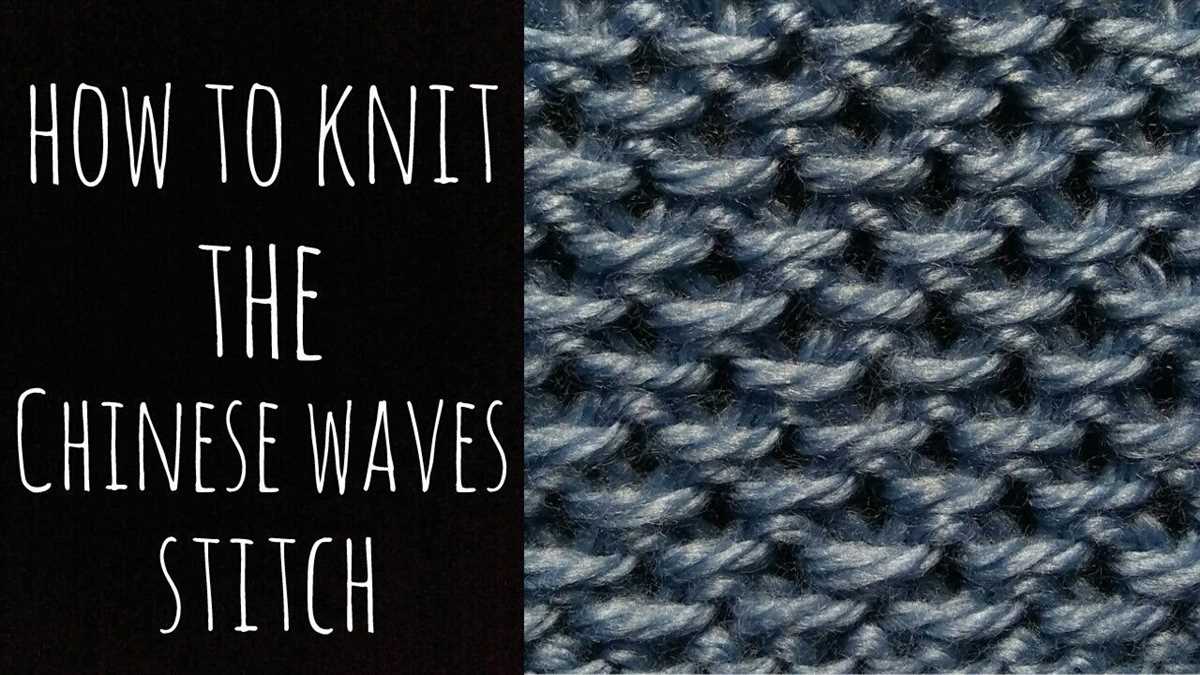
Chinese wave stitch knitting pattern is a traditional knitting technique that originated in China. It is a beautiful and intricate pattern that creates the appearance of waves cascading down the fabric. This pattern is often used to create eye-catching and textured designs in knitted garments, accessories, and home decor items.
The Chinese wave stitch knitting pattern involves using a combination of knit and purl stitches to create the wave-like effect. The pattern typically consists of multiple rows of repeating stitches, with the waves varying in size and shape. This creates a visually interesting texture that adds depth and dimension to the knitted fabric.
To create the Chinese wave stitch pattern, knitters will usually need to follow a chart or written instructions that outline the specific stitches and techniques required. The pattern may include instructions for different variations of the wave stitch, such as alternating waves or waves within waves. Knitters will need to pay close attention to the pattern and carefully execute each stitch to achieve the desired result.
- Chinese wave stitch knitting can be challenging for beginners due to its complexity.
- It requires a good understanding of basic knitting techniques, such as knitting and purling.
- This pattern is often used to add a touch of elegance and sophistication to knitted garments, such as sweaters, cardigans, and shawls.
- It can also be incorporated into accessories like scarves, hats, and mittens, or even used to create decorative items like blankets and pillow covers.
Overall, the Chinese wave stitch knitting pattern is a versatile and visually striking technique that adds an element of artistry to any knitted project. Whether you’re a seasoned knitter looking for a new challenge or a beginner eager to learn something new, this pattern can offer endless creative possibilities.
History and Origins of Chinese Wave Stitch
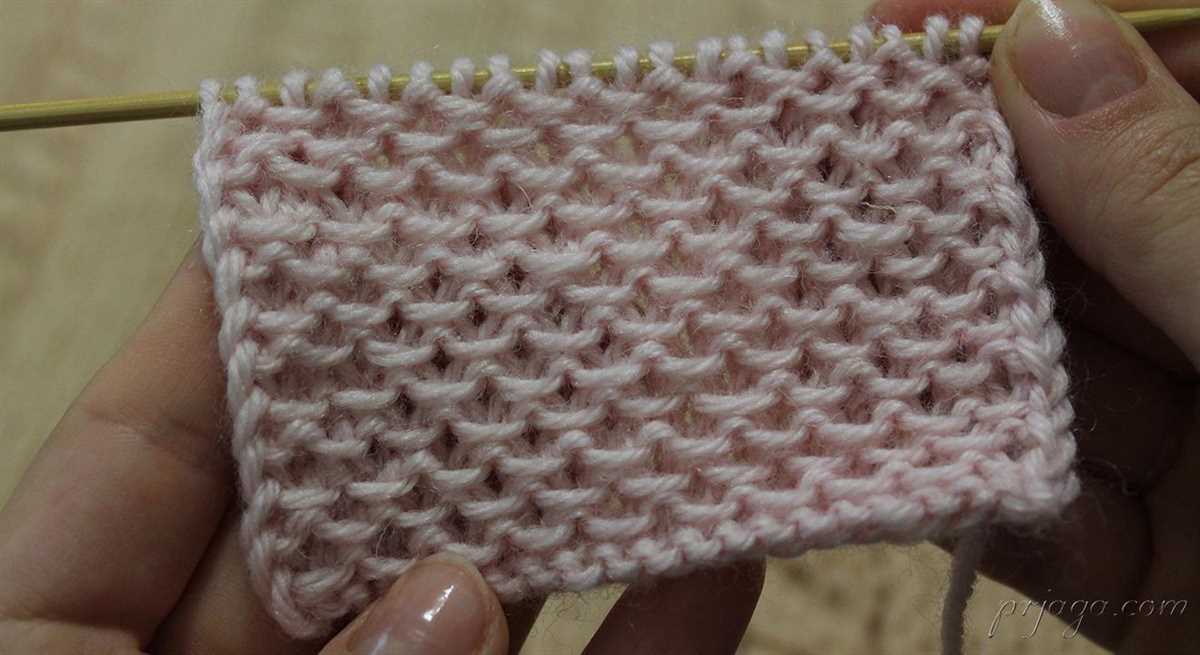
The Chinese wave stitch is a unique knitting pattern that originated in China centuries ago. It is known for its intricate design and wave-like pattern, which is created using a combination of knit and purl stitches. The stitch is commonly used in various traditional Chinese garments and accessories, and is also popular among modern knitters around the world.
The exact origins of the Chinese wave stitch are unclear, as knitting techniques have been practiced in China for thousands of years. However, it is believed that the wave stitch gained popularity during the Ming Dynasty (1368-1644). During this time, knitting became a common craft among the Chinese people, and various patterns and stitches were developed.
The wave stitch was often used in the creation of clothing and accessories worn by royalty and high-ranking officials. It was considered a symbol of wealth and social status, as the intricate design required skilled craftsmanship and was time-consuming to produce. The wave stitch was typically used in the borders and trims of garments, adding an elegant and sophisticated touch to the overall design.
- Chinese wave stitch pattern: The Chinese wave stitch pattern consists of repeating rows of knit and purl stitches, creating a wave-like effect. The pattern is usually worked on a multiple of stitches, such as multiples of 12 or 16, to ensure symmetry.
- Traditional Chinese garments: The wave stitch is commonly seen in traditional Chinese garments such as qipaos (cheongsams), jackets, and scarves. These garments often feature elaborate embroidery and intricate patterns, showcasing the skill and craftsmanship of the Chinese artisans.
- Modern interpretations: In recent years, the Chinese wave stitch pattern has gained popularity among modern knitters who appreciate its unique design. It is often used in contemporary designs, such as scarves, shawls, and blankets. The wave stitch adds a touch of elegance and texture to these modern creations.
In conclusion, the Chinese wave stitch is a significant part of Chinese knitting history and culture. Its origins can be traced back to ancient times, and it continues to be cherished and practiced by knitters worldwide. Whether used in traditional Chinese garments or modern creations, the wave stitch adds a beautiful and timeless touch to any knitting project.
Materials Needed for Chinese Wave Stitch Knitting
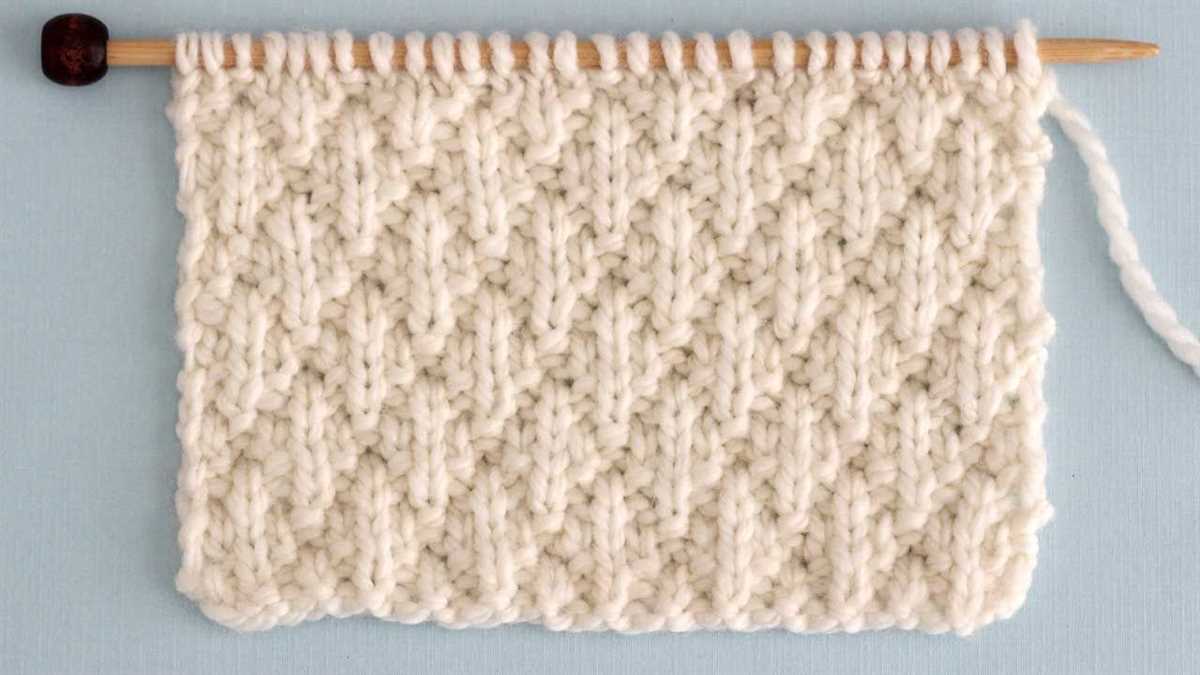
Before starting the Chinese Wave Stitch knitting project, it is important to gather all the necessary materials. Here is a list of items you will need:
- Yarn: Choose a yarn that is suitable for the Chinese Wave Stitch pattern. It is recommended to use a medium-weight yarn, such as Worsted or Aran weight.
- Knitting Needles: You will need a pair of knitting needles in the appropriate size for your chosen yarn. Check the yarn label for recommended needle size.
- Tapestry Needle: A tapestry needle will be needed to weave in the loose ends of yarn and finish the project.
- Scissors: A pair of scissors is essential for cutting the yarn and trimming any excess.
- Stitch Markers: Stitch markers can be useful for marking specific stitches or sections of the pattern to help keep track of your progress.
- Row Counter: A row counter can be handy for keeping count of the number of rows or pattern repeats completed.
Make sure to gather all these materials before starting the Chinese Wave Stitch pattern. Having everything ready and within reach will make the knitting process more enjoyable and efficient.
How to Knit Chinese Wave Stitch
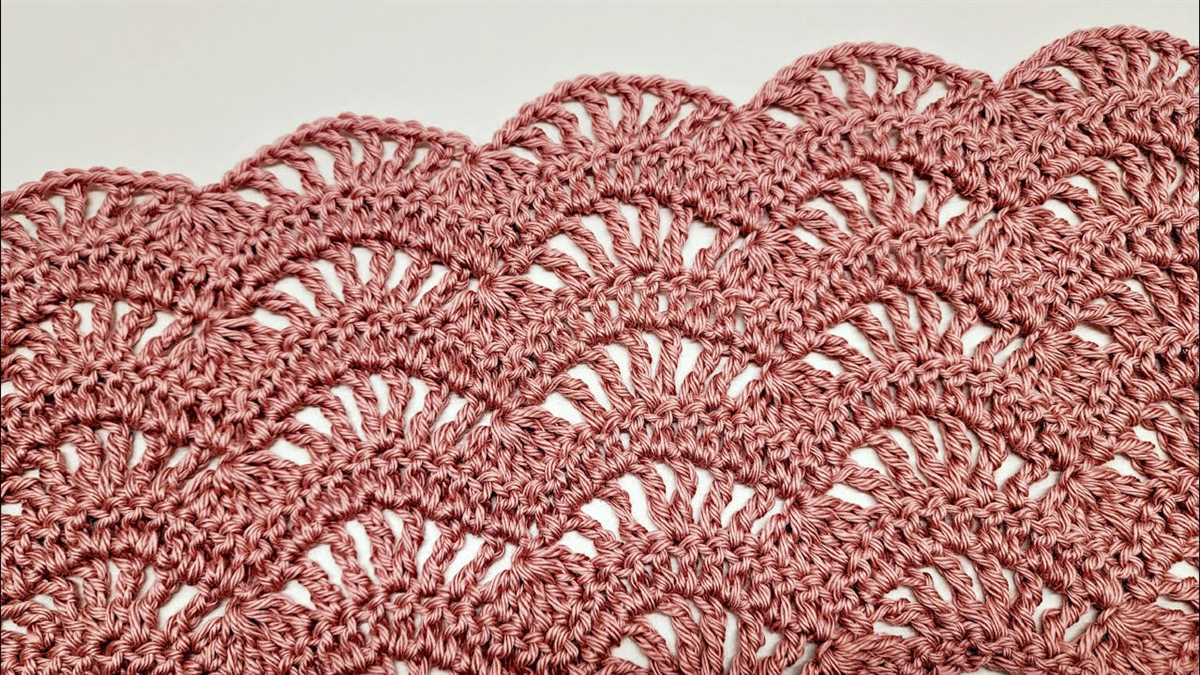
The Chinese wave stitch is a beautiful knitting pattern that creates a unique wave-like texture. It is a great option for adding some visual interest to your knitting projects, whether you are making a scarf, hat, or even a sweater. This stitch pattern is created by alternating rows of knit and purl stitches in a specific pattern. Here is a step-by-step guide on how to knit Chinese wave stitch.
Materials:
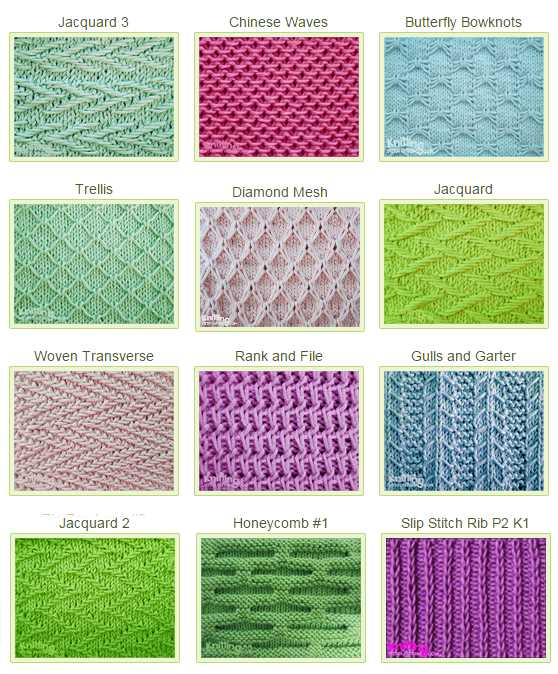
- Yarn of your choice
- Knitting needles in the appropriate size for your yarn
- Tapestry needle for weaving in ends
Instructions:
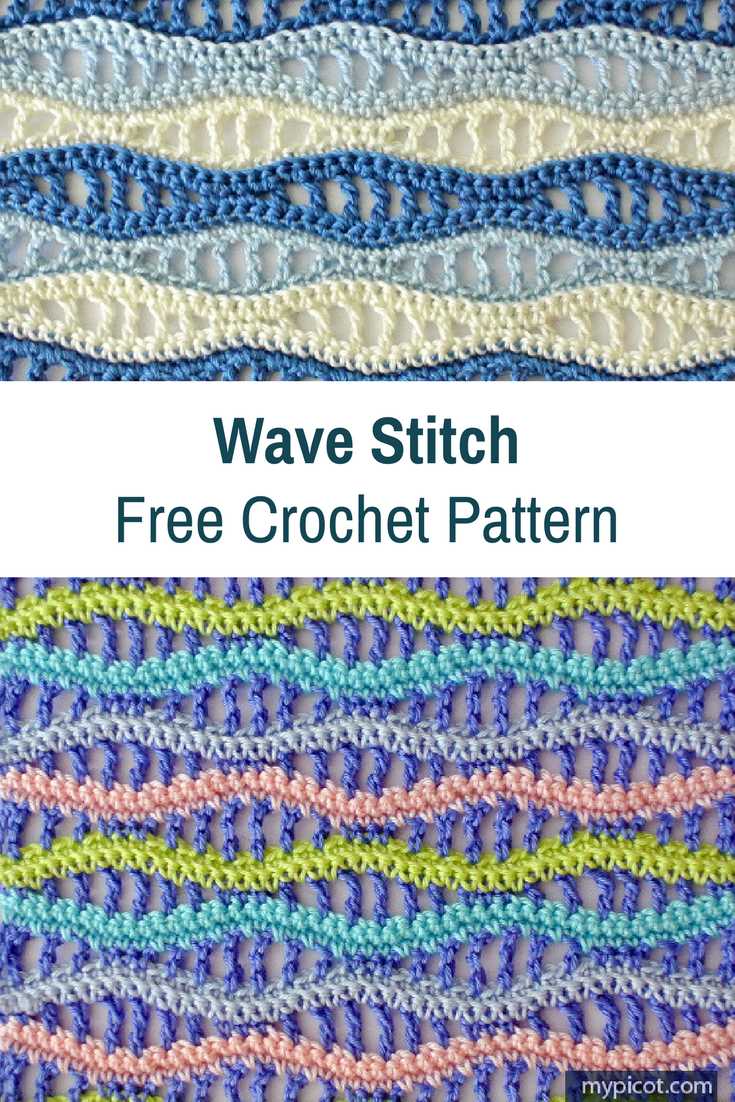
- Start by casting on an even number of stitches.
- Row 1: Knit all stitches.
- Row 2: Purl all stitches.
- Row 3: Knit 2 stitches together, and then without slipping the stitches off the left needle, knit the first stitch again. Slip both stitches off the left needle. Repeat this pattern across the row.
- Row 4: Purl all stitches.
- Repeat rows 3 and 4 until your knitting reaches the desired length.
- Bind off all stitches in the pattern of your choice.
- Weave in any loose ends with a tapestry needle.
Once you have mastered the basic Chinese wave stitch pattern, you can experiment with different variations by adding different colors or changing the size of the waves. This versatile stitch pattern can be used in a variety of knitting projects and will surely impress everyone with its intricate design.
Whether you are a beginner or an experienced knitter, the Chinese wave stitch is a fun and rewarding pattern to try. So grab your yarn and needles and start knitting some beautiful waves!
Tips for a Successful Chinese Wave Stitch Knitting Project
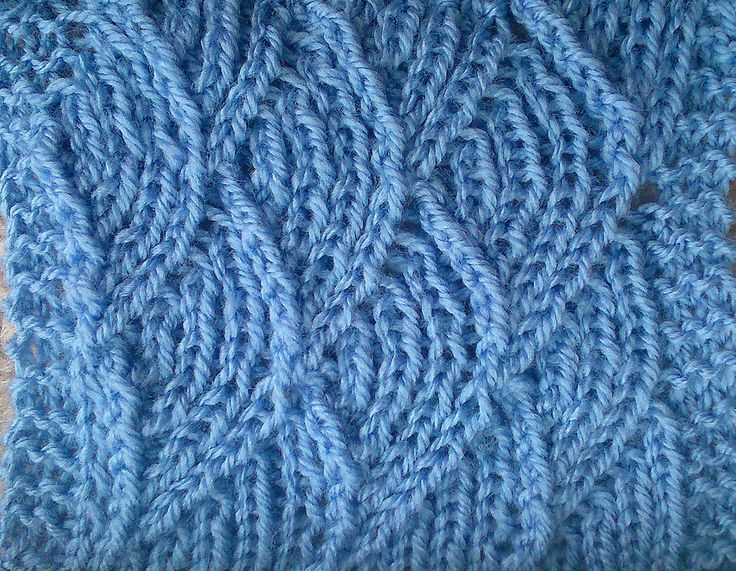
Knitting the Chinese Wave Stitch can be a rewarding and enjoyable project. With its intricate pattern and delicate texture, it adds a touch of elegance to any knitted item. However, it can also be a challenging stitch to master. Here are some tips to help you have a successful Chinese Wave Stitch knitting project.
Choose the Right Yarn and Needles
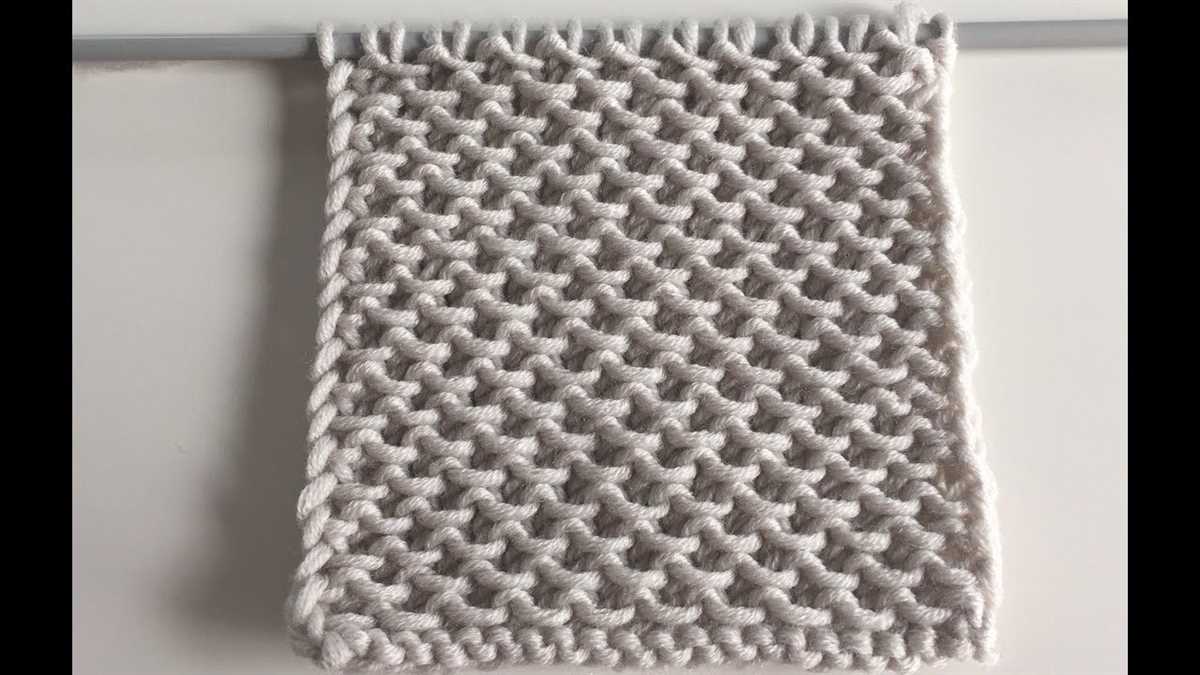
When knitting the Chinese Wave Stitch, it is important to choose the right yarn and needles. For this stitch, a lightweight yarn with good stitch definition works best. Choose a smooth, non-fuzzy yarn that allows the intricate stitch pattern to shine. In terms of needles, opt for a size that allows you to achieve the desired tension and gauge. Experiment with different needle sizes until you find the one that works best for you.
Master the Stitch Pattern

The Chinese Wave Stitch consists of a combination of knit, purl, yarn over, and slip stitches. Take the time to fully understand the stitch pattern and practice it before starting your project. It is helpful to create a swatch or a small sample to familiarize yourself with the stitch pattern and ensure that you are comfortable with it. Pay attention to any specific stitch placement or repeats in the pattern, as this will help you maintain consistency throughout your project.
Keep Track of Your Rows
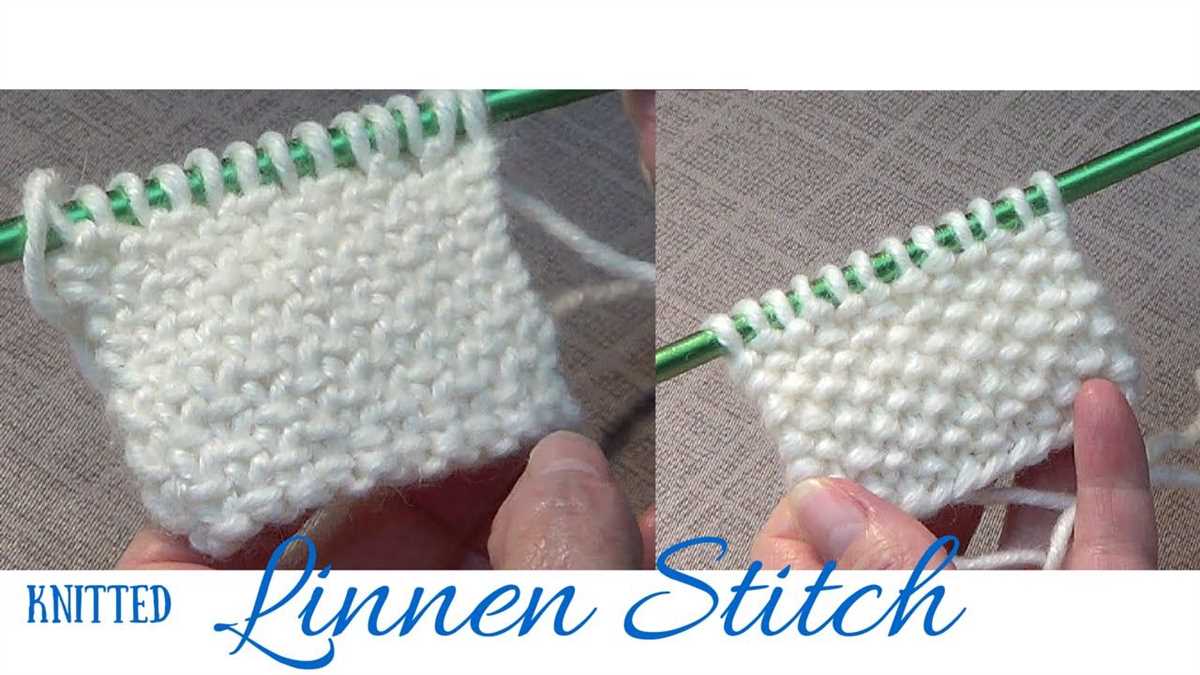
The Chinese Wave Stitch often requires a specific number of rows to create the desired effect. It is important to keep track of your rows to ensure that your pattern is symmetrical and aligned. Using stitch markers or a row counter can help you stay organized and avoid any mistakes or inconsistencies in your project. Make a habit of checking your row count regularly to ensure that you are on track.
Practice Tension Control
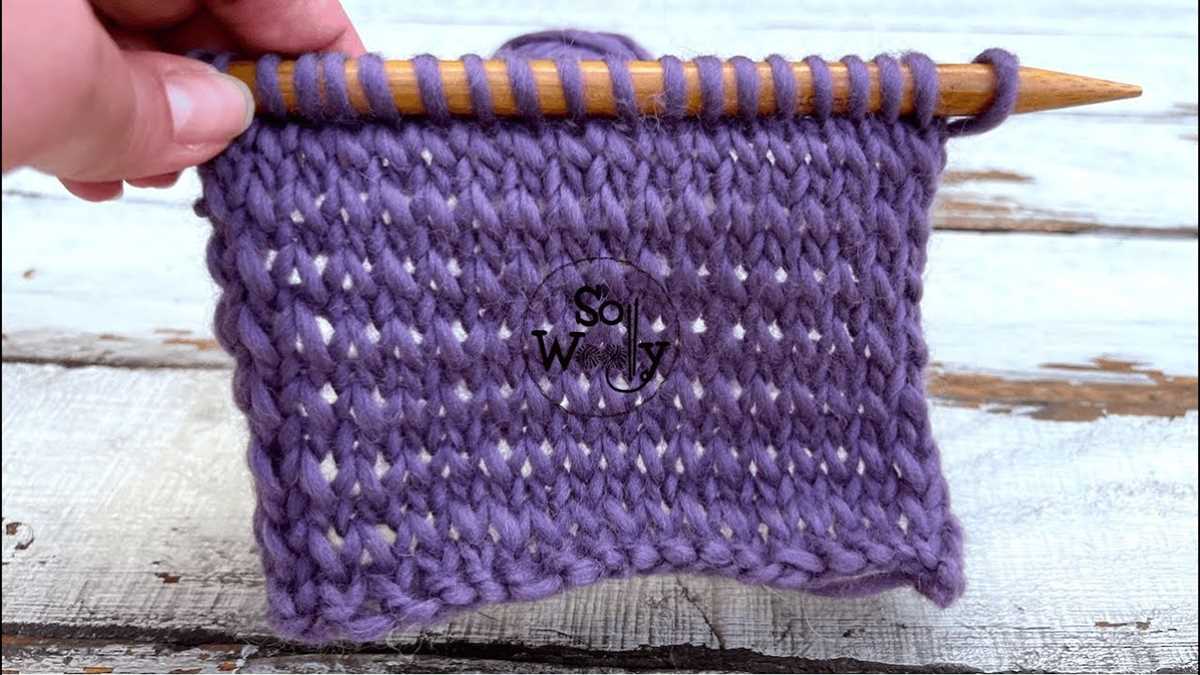
Tension control is crucial when knitting the Chinese Wave Stitch. This stitch pattern can easily become loose or tight if not properly managed. Practice maintaining a consistent tension throughout your project to achieve uniform stitches. Pay attention to how you hold the yarn and adjust your grip if necessary. Additionally, blocking your finished project can help even out any variations in tension and give your stitches a polished look.
Take Your Time
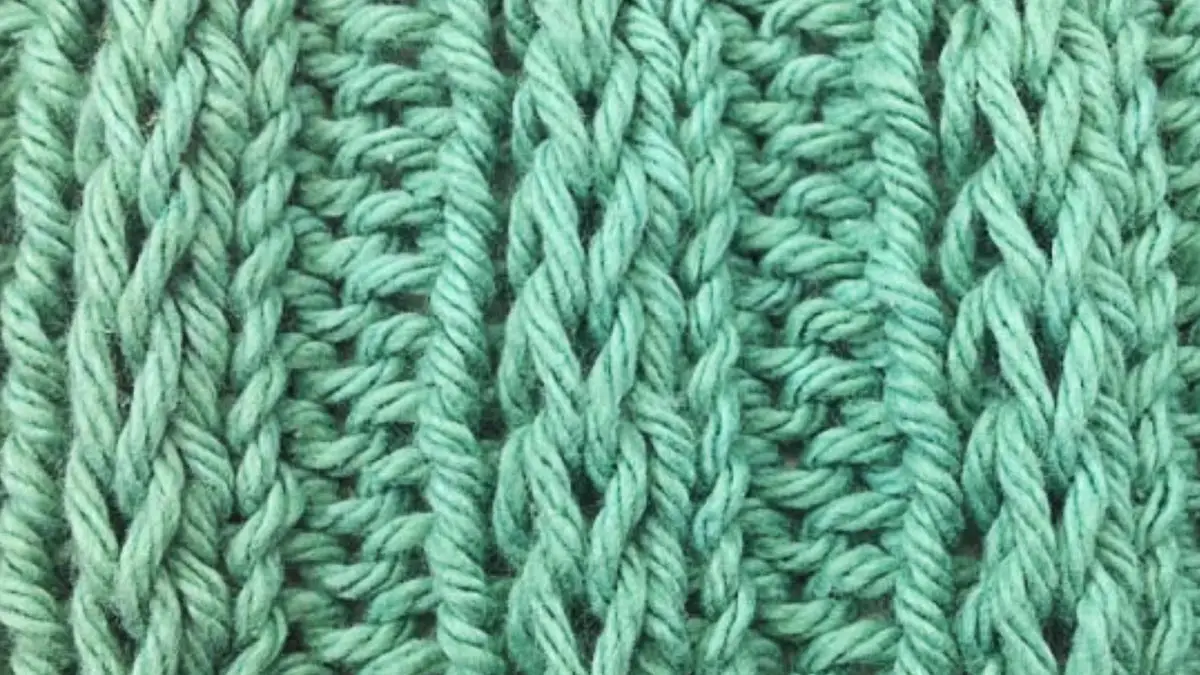
Knitting the Chinese Wave Stitch can be intricate and time-consuming. It is important to take your time and enjoy the process. Rushing through the project can lead to mistakes and frustration. Set aside dedicated knitting time, preferably in a quiet and comfortable environment, where you can focus on each stitch. Remember to relax and have patience, as the end result will be well worth the effort.
Variations of Chinese Wave Stitch
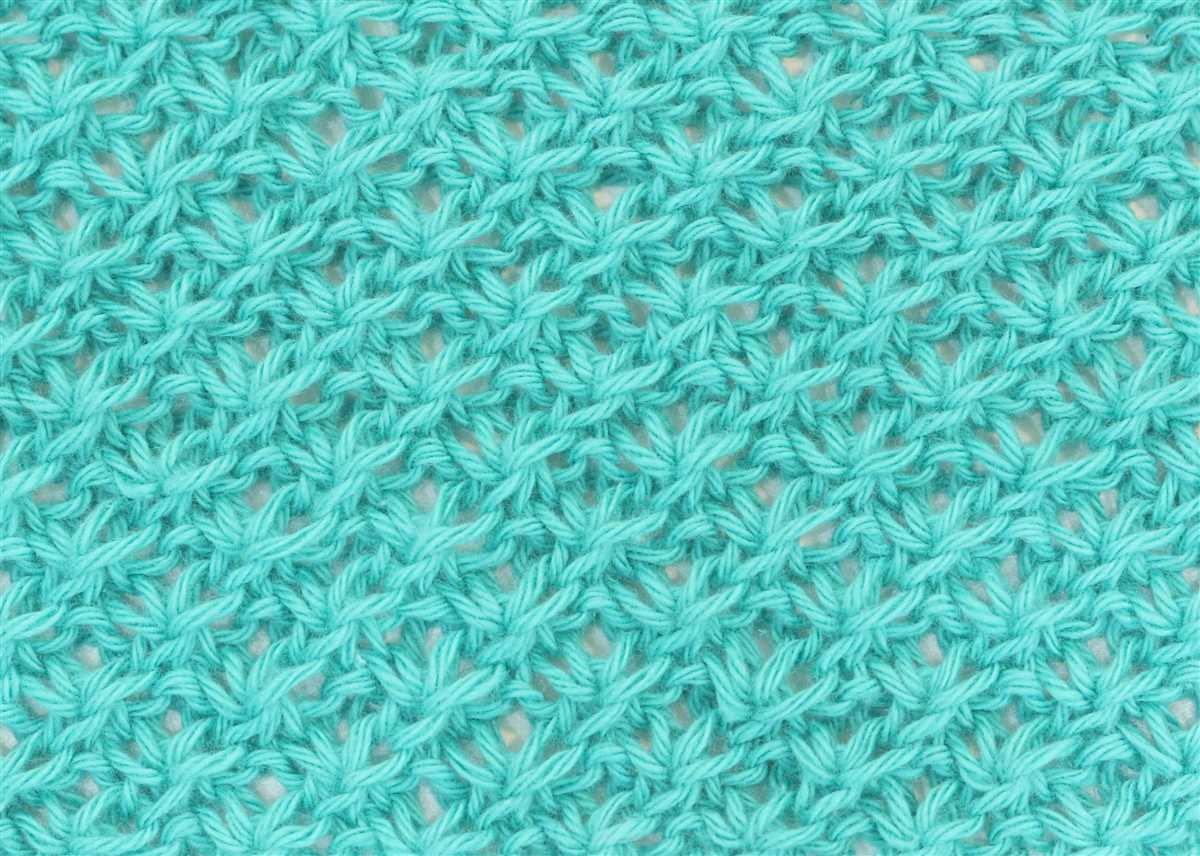
Chinese Wave Stitch is a beautiful knitting pattern that creates a wave-like texture. This stitch pattern is often used to add visual interest and texture to various knitting projects like scarves, blankets, and sweaters. While the basic Chinese Wave Stitch remains the same, there are several variations that can be incorporated to create unique and personalized designs.
Garter Stitch Variation: One variation of the Chinese Wave Stitch involves incorporating garter stitch rows between the wave pattern. This can be done by knitting a few rows of garter stitch before starting the wave stitch pattern, and then alternating between the two. The garter stitch adds an extra layer of texture and brings out the wave pattern even more.
Colorwork Variation: Another way to add variation to the Chinese Wave Stitch is by incorporating different colors into the wave pattern. This can be done using stranded or intarsia colorwork techniques. By using contrasting colors, the wave pattern becomes even more prominent and eye-catching. This variation allows for endless possibilities in terms of color combinations and design customization.
Lace Variation: For those who enjoy lace knitting, the Chinese Wave Stitch can be modified to incorporate lace motifs. By adding yarn overs and decrease stitches in strategic places, the wave pattern can be transformed into a delicate lace design. This variation adds a touch of elegance and femininity to the traditional wave stitch.
Striped Variation: Another popular variation of the Chinese Wave Stitch is the striped version. This involves alternating between two or more colors in the wave pattern, creating a striped effect. By playing with different color combinations and stripe widths, the possibilities are endless in terms of creating unique and vibrant designs.
Overall, the Chinese Wave Stitch is a versatile knitting pattern that can be customized and adapted in various ways. Whether it’s incorporating different stitch patterns, colors, or motifs, the variations of the Chinese Wave Stitch allow knitters to create truly unique and personalized projects.
Projects to Try with Chinese Wave Stitch

If you’re looking for a new knitting challenge, why not try incorporating the Chinese wave stitch into your next project? This beautiful stitch pattern features a wave-like design that adds texture and visual interest to any knitted piece. Whether you’re a beginner or an experienced knitter, there are plenty of projects you can try using the Chinese wave stitch.
1. Scarves: One of the easiest ways to incorporate the Chinese wave stitch into your knitting is by making a scarf. This stitch pattern creates a gorgeous ripple effect that looks stunning in a scarf. You can use a single color yarn for a classic look or experiment with different color combinations for a more unique design.
2. Baby Blankets: The Chinese wave stitch is perfect for baby blankets, as it creates a soft and cozy texture. Knitting a baby blanket with this stitch is not only a practical project but also a thoughtful gift for a newborn. Choose a soft and washable yarn to ensure the blanket is gentle on the baby’s skin.
3. Hats: Add some flair to your winter wardrobe by knitting a hat with the Chinese wave stitch pattern. The wave-like design will keep you warm while giving your hat a stylish twist. You can knit the hat in a single color or experiment with stripes to highlight the wave pattern even more.
4. Shawls: For a more advanced project, consider knitting a shawl using the Chinese wave stitch. The stitch pattern creates a beautiful drape, making it perfect for a lightweight and elegant shawl. Choose a soft and silky yarn to enhance the drape and flow of the waves.
These are just a few ideas to get you started with the Chinese wave stitch. Whether you’re knitting for yourself or making a gift for someone else, incorporating this stitch pattern will add a touch of elegance and sophistication to your projects.
Chinese Wave Stitch in Fashion
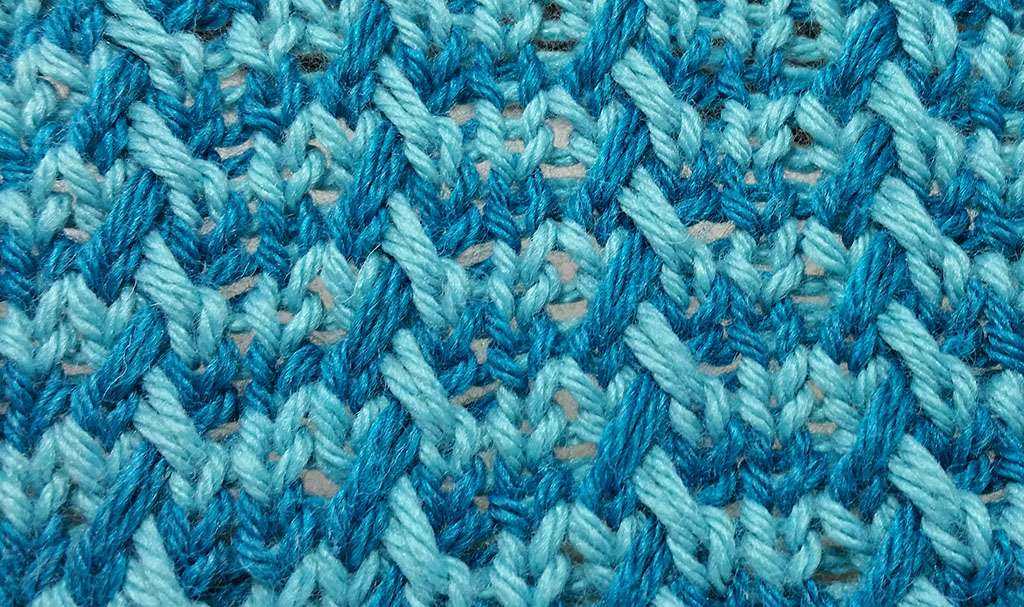
The Chinese wave stitch knitting pattern has become a popular choice in the fashion industry. With its intricate and delicate design, this stitch adds an elegant touch to any garment or accessory. The wave-like pattern creates a visually appealing texture that is both eye-catching and unique.
Many fashion designers have incorporated the Chinese wave stitch into their collections, showcasing the beauty and versatility of this pattern. From sweaters and cardigans to scarves and hats, the wave stitch can be used in various ways to create stunning pieces. Its versatility allows it to be used in both casual and formal designs, making it a go-to choice for fashion enthusiasts.
Elegant and Timeless
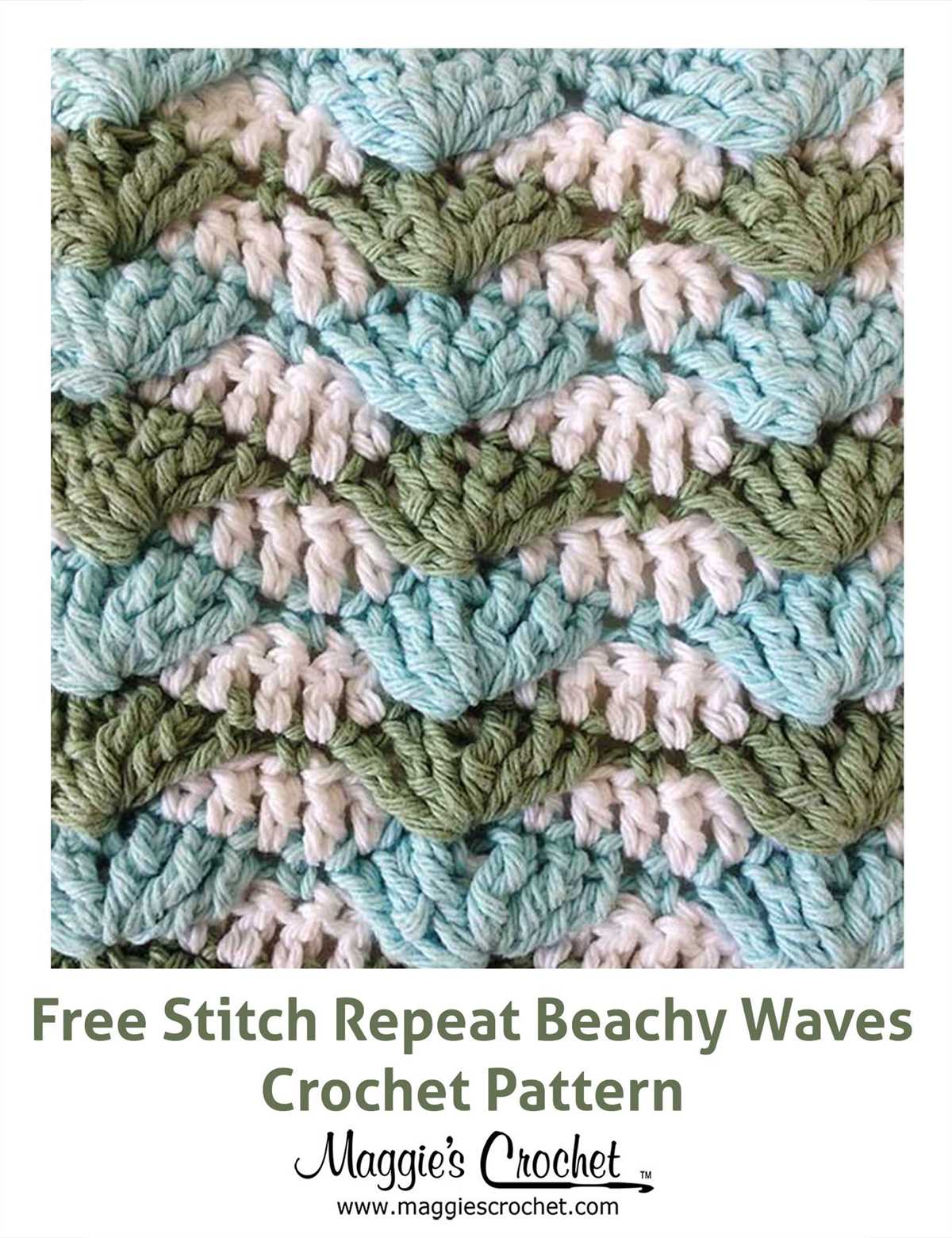
The Chinese wave stitch pattern exudes an aura of elegance and timelessness. It adds a touch of sophistication to any outfit, whether it’s a cozy winter sweater or a lightweight summer shawl. The delicate waves create a sense of movement, making the garment come to life.
Not only does the Chinese wave stitch pattern look beautiful, but it also offers a unique knitting experience. The intricacy of the pattern requires skill and precision, making it a favorite among experienced knitters. It offers a challenge and an opportunity to create something truly special.
Chic and Trendy
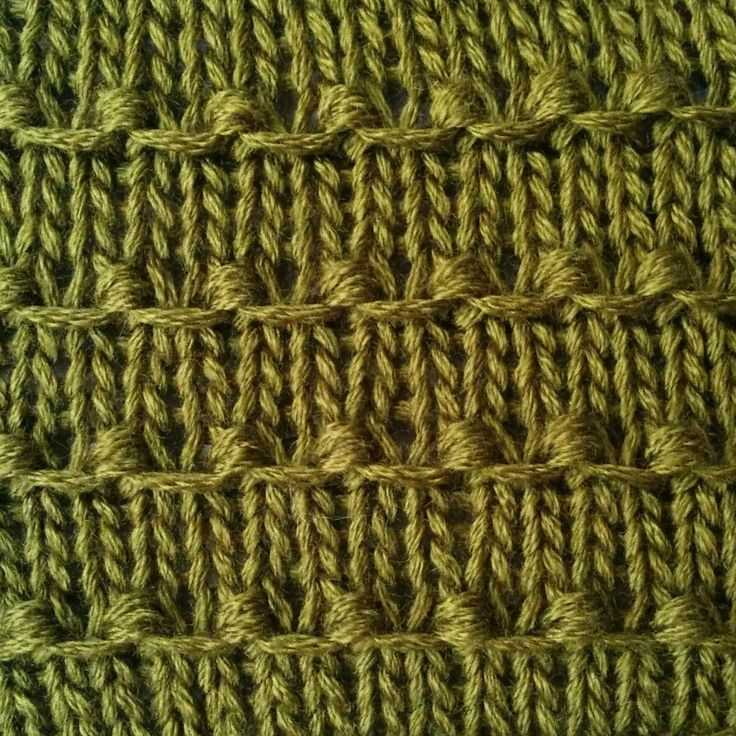
The Chinese wave stitch pattern has gained popularity in recent years, making its way onto the fashion runways. Designers have been incorporating this stitch into their collections, introducing it to a wider audience. Its chic and trendy appeal has made the wave stitch a staple in the fashion world.
Whether you’re looking for a statement piece or a subtle detail, the Chinese wave stitch pattern can deliver. Its versatility allows it to be used in various ways, making it suitable for different styles and aesthetics. The wave stitch adds dimension, texture, and interest to any garment or accessory, making it a must-have for fashion-forward individuals.
Where to Find Chinese Wave Stitch Knitting Patterns
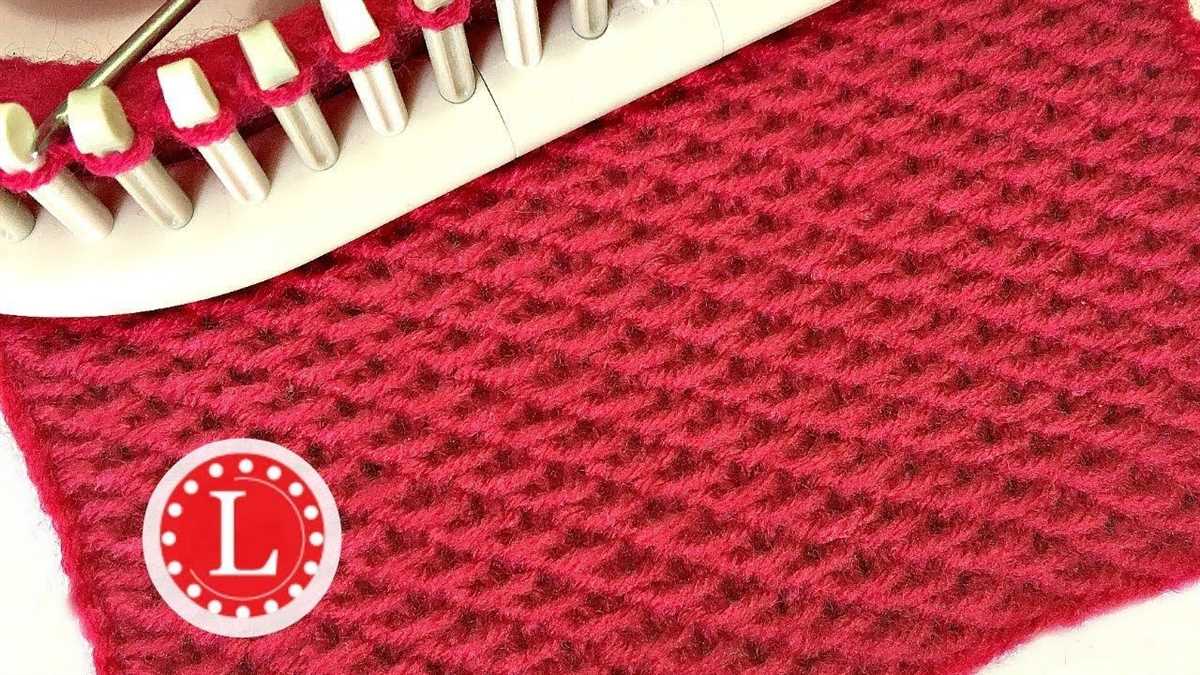
Chinese wave stitch is a beautiful and intricate knitting pattern that creates a wavy texture resembling the gentle motion of ocean waves. If you’re interested in trying out this unique stitch, there are several places where you can find Chinese wave stitch knitting patterns.
1. Online knitting communities and forums: Joining online knitting communities and forums is a great way to connect with fellow knitters who may have experience with Chinese wave stitch. These communities often share patterns and tips, and members can offer guidance and support as you learn and practice the stitch. Some popular knitting communities include Ravelry, Knitting Paradise, and LoveKnitting.
2. Knitting pattern websites: Many websites specialize in knitting patterns and offer a variety of options, including Chinese wave stitch patterns. Websites like Knitty, Knitting Pattern Central, and AllFreeKnitting have extensive pattern collections and allow you to search specifically for Chinese wave stitch patterns. Some of these websites may offer free patterns, while others require a purchase or membership.
3. Knitting books and magazines: Knitting books and magazines often feature a wide range of stitch patterns, including Chinese wave stitch. Visit your local library or bookstore to find knitting books with stitch pattern collections or browse through knitting magazines for patterns that incorporate Chinese wave stitch. Some popular knitting magazines include Vogue Knitting, Interweave Knits, and Knit Simple.
4. Knitting workshops and classes: If you prefer a more hands-on approach, consider attending knitting workshops or classes that focus on Chinese wave stitch. Local yarn shops or community centers may offer these types of classes, where you can learn from experienced knitters and receive personalized instruction. Additionally, craft fairs and knitting conventions often feature workshops that cover specific stitch patterns.
In conclusion, Chinese wave stitch knitting patterns can be found in a variety of places, including online knitting communities, knitting pattern websites, knitting books and magazines, and knitting workshops and classes. Whether you prefer digital downloads, physical copies, or in-person instruction, there are plenty of resources available to help you explore and master this beautiful stitch.
Q&A:
What is the Chinese wave stitch knitting pattern?
The Chinese wave stitch knitting pattern is a type of stitch pattern that creates a wavy, flowing effect in knitted fabric. It typically involves a combination of knit and purl stitches worked in a specific repeat pattern.
What types of projects are suitable for the Chinese wave stitch pattern?
The Chinese wave stitch pattern can be used for a variety of knitting projects, such as scarves, shawls, blankets, and even sweaters. It creates a beautiful, textured fabric that adds visual interest to any project.
Are there any variations of the Chinese wave stitch pattern?
Yes, there are several variations of the Chinese wave stitch pattern. Some variations include adding additional knit or purl stitches within the repeat pattern, or changing the number of stitches in the repeat altogether. These variations can create different effects and textures in the knitted fabric.
Can the Chinese wave stitch pattern be used for lace knitting?
Yes, the Chinese wave stitch pattern can be used for lace knitting. By using finer yarn and smaller needles, the stitch pattern can be transformed into a delicate lace fabric. Lace knitting charts or written instructions may be needed to properly follow the pattern for lace projects.